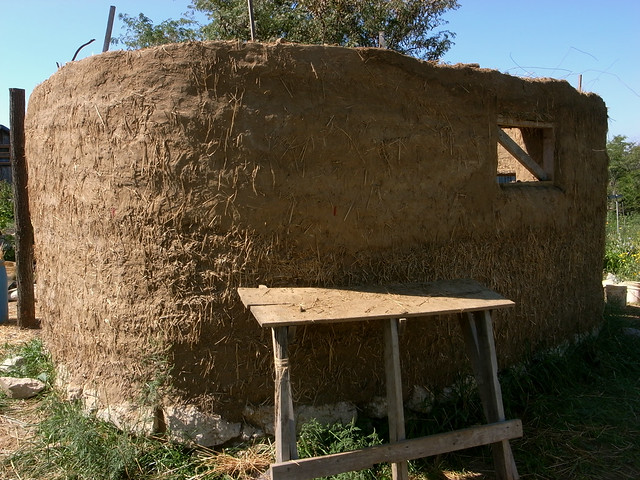Birds, squirrels, ants, and other species construct their own shelters out of readily available materials, like sticks, rope fiber, straw, mud, and other debris. Us, on the other hand, hire a team of workers to build our homes using drywall, wood panels, laminate flooring, paint, insulation, and other toxic and refined materials.
If you're fortunate you can build your own home; but like most of us we have to search for a vacant home at an affordable price. My mother bought home in the 90's for around $10K, and the house was built in the 1930s! It was always falling in and everything is always breaking, or pipes are freezing and breaking.
Unfortunately, even the simplest and decent of homes can cost up to $100,000. This could take ten or 20 years to pay off.
I don't want to spend my entire life going to school for training, then working over 20 years at an unfulfilling job...
We could learn from the animals, for example building our homes for free or little cost by constructing it ourselves using the same materials other animals use.
I believe we can and should build our homes out of non-toxic, free available materials, such as the wild animals do. 'cob', 'strawbale', 'earthbag', and earthship homes are examples of how we can use readily available materials efficiently and adapt to our needs.
I prefer the cob (straw, sand, and clay) method because I have these materials in abundance. The ground is clay, dried grass is straw and the creeks are full of sand. I intend to create a similar construction as this couple has done in the picture below. It requires no wood for frames; and instead the walls are built up with slabs of mud, straw, and sand until you have reached the desired height. Although this method seems unsteady, it is not-- because the materials mixed creates the consistency of concrete.
The couple that built the home (in the picture), took approximately 9 months to construct and several months to dry out.
For the step-by-step process (with pictures), go to their photo album here: "Year of Mud" The couple has several photo albums of their cob, and all natural building workshops as well as gardening photos on their Flikr page too.
My vision for a cob home would be somewhat of a nook. Perhaps as small as a normal sized kitchen! First the area will require leveling the ground, then digging a ditch in the outline of the shape of the home. It will be as small as a large shed, with one room to house dried herbs, books, some food, and a bed. I want a small frame that will allow us to save time on constructing the house while encouraging us to be outside instead of cooped up inside.
For those with no money or property, can experiment with building a debris shelter in the woods. In this case, you want to live absolutely free or temporarily in the woods, read a more recent post of mine "Semi-Permanent Debris Shelters (Minimal Living or living in the woods)" where I discuss how to build a shelter out of sticks and leaves. These debris shelters remind me of bird nests with more coverage.
 |
| bed made by monkeys |
I want to live in a world where everyone views their life simply: We get our basic needs met through Homesteading (food, water, shelter) which involves gardening, collecting free energy (sun and water), and building an all natural home. Live self reliant, independent, sustainable, and free as the animal you are.



